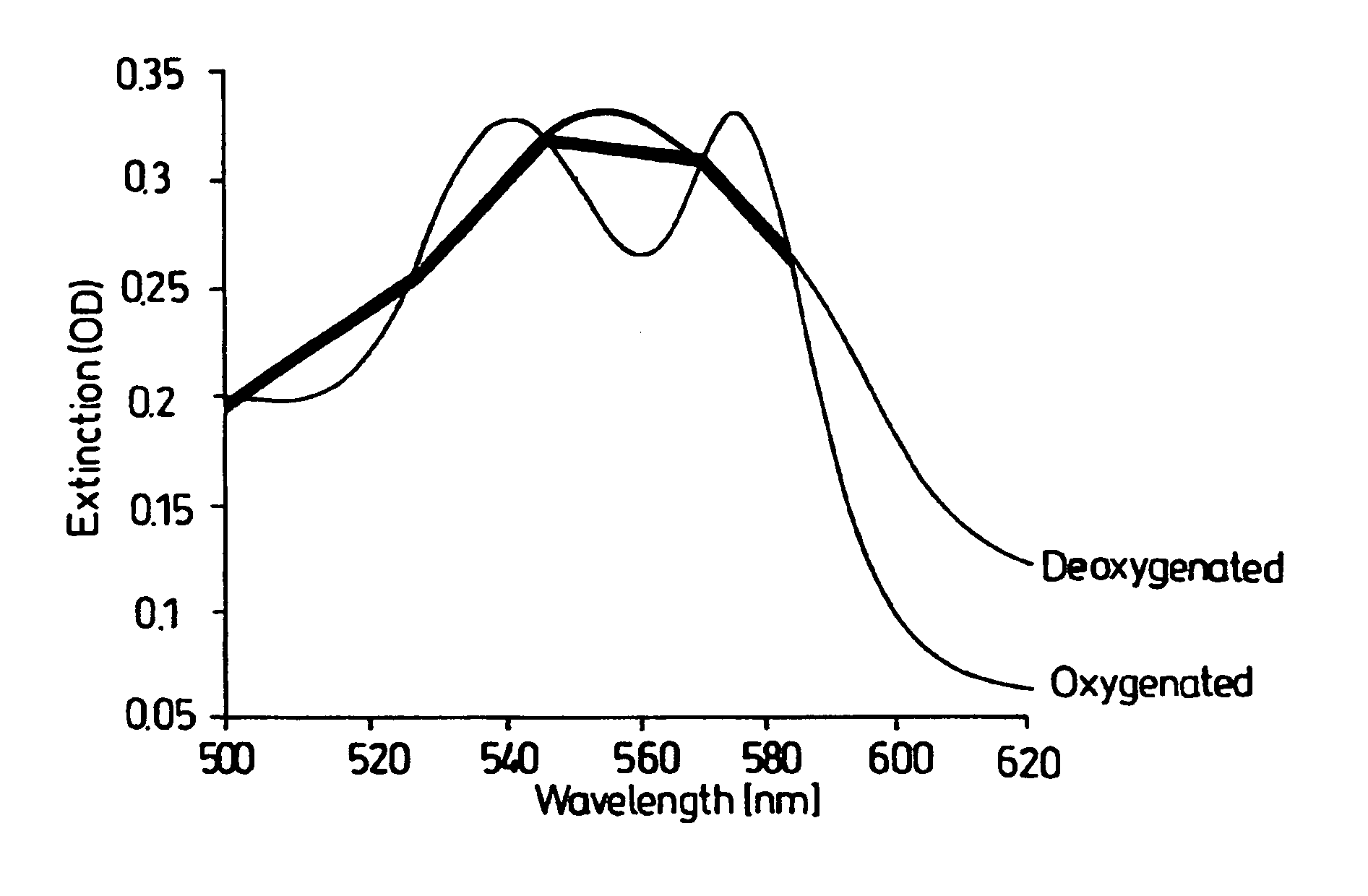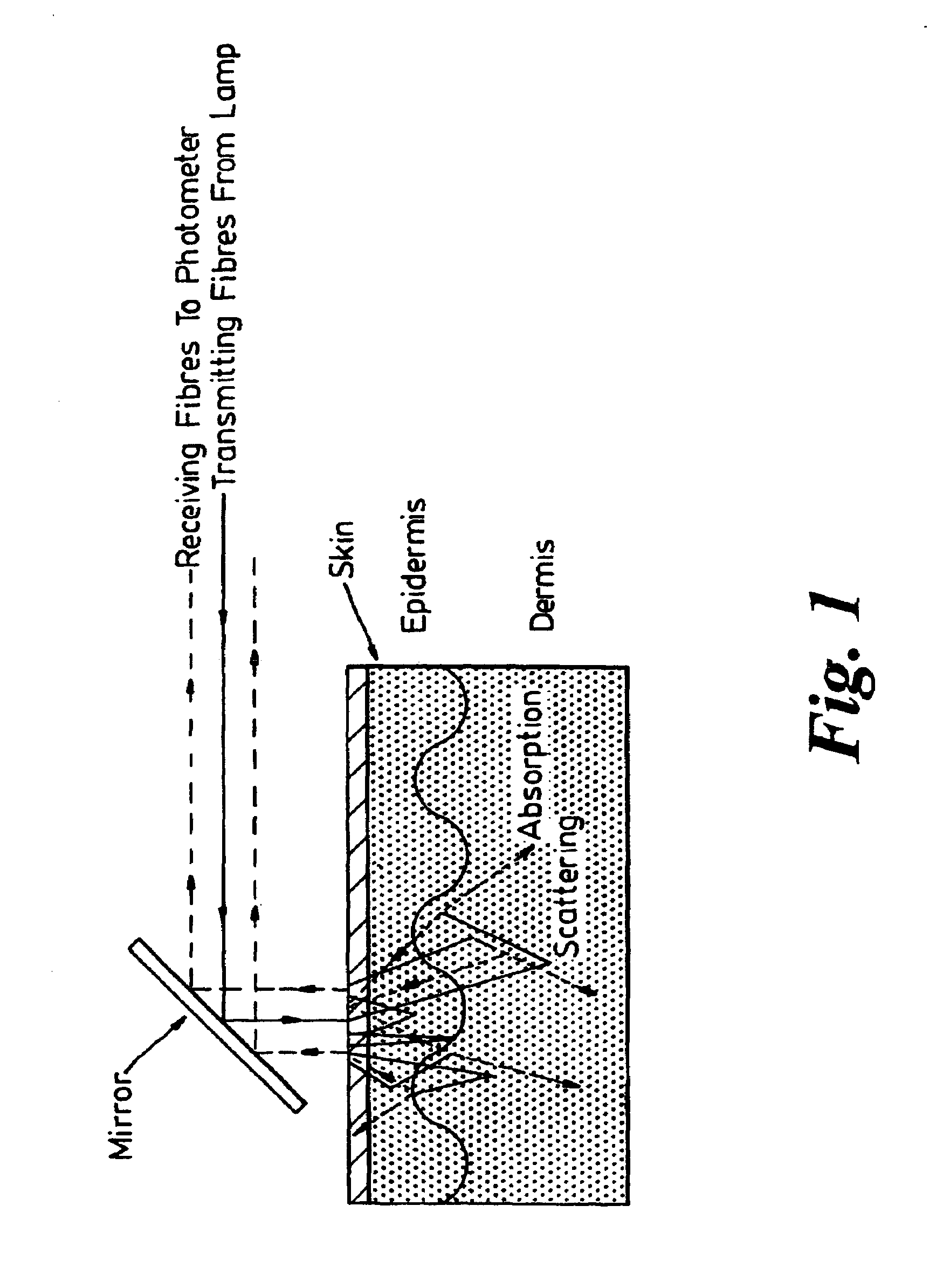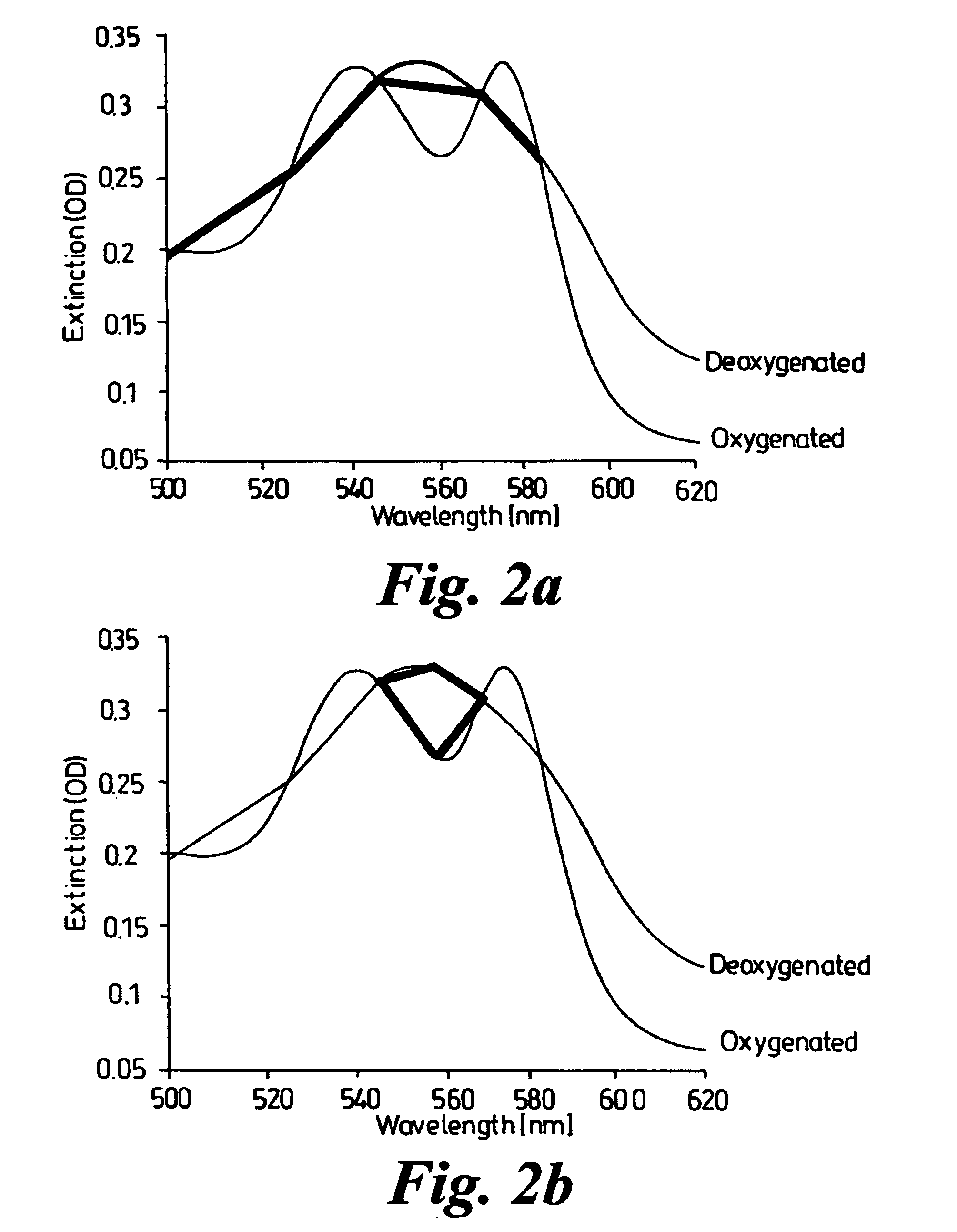Optical device
a technology of optical devices and optical components, applied in the field of optical devices, can solve the problems of inability of devices to distinguish between interference of instruments, and changes in received light intensity, and achieve the effect of reducing movement artefacts and enabling flexibility in algorithms
- Summary
- Abstract
- Description
- Claims
- Application Information
AI Technical Summary
Benefits of technology
Problems solved by technology
Method used
Image
Examples
Embodiment Construction
[0056]With reference to FIG. 1, an optical blood saturation sensor (1) comprises transmitting fibres (2) from a lamp (not shown) which transmit light to be reflected from a mirror (3) onto the skin (4) of a patient where the light in proportions is absorbed and scattered or reflected depending upon the oxygen content of the haemoglobin and the wavelengths of light used. Reflected light (5) is detected by receiving fibres (6) and transmitted to a photometer (not shown).
[0057]The measurement technique can best be understood by reference to FIGS. 2(a) and 2(b). Analysis of the data to obtain an index of haemoglobin concentration and arterial oxygen saturation (SaO2) is carried out as follows: the gradients between 5 isobestic wavelengths (500, 520, 548, 575 and 586 mm) are added to given an index which is related to the haemoglobin concentration. This index is used to normalise the measured tissue spectra. The oxygen saturation (SO2) is calculated from the gradients between the absorpt...
PUM
 Login to View More
Login to View More Abstract
Description
Claims
Application Information
 Login to View More
Login to View More - R&D
- Intellectual Property
- Life Sciences
- Materials
- Tech Scout
- Unparalleled Data Quality
- Higher Quality Content
- 60% Fewer Hallucinations
Browse by: Latest US Patents, China's latest patents, Technical Efficacy Thesaurus, Application Domain, Technology Topic, Popular Technical Reports.
© 2025 PatSnap. All rights reserved.Legal|Privacy policy|Modern Slavery Act Transparency Statement|Sitemap|About US| Contact US: help@patsnap.com



